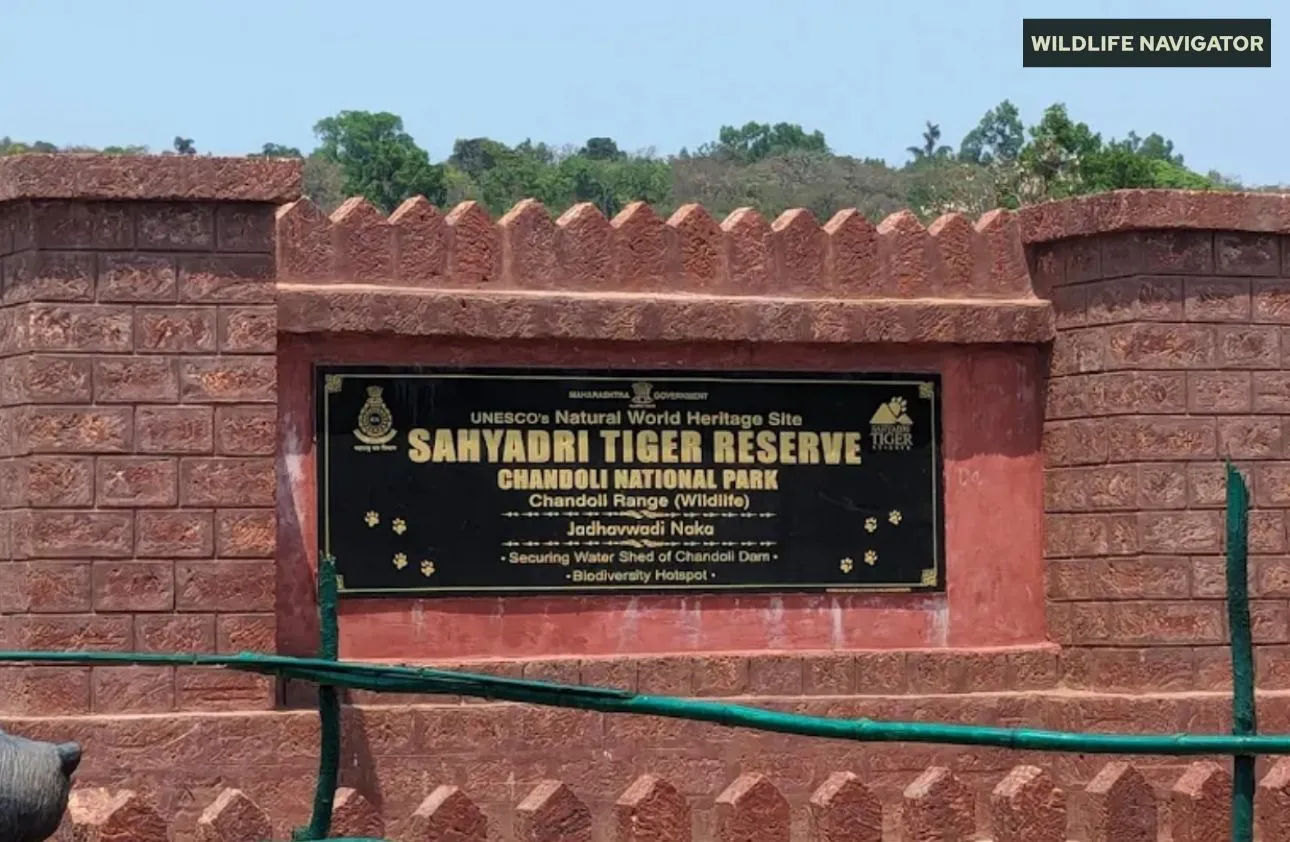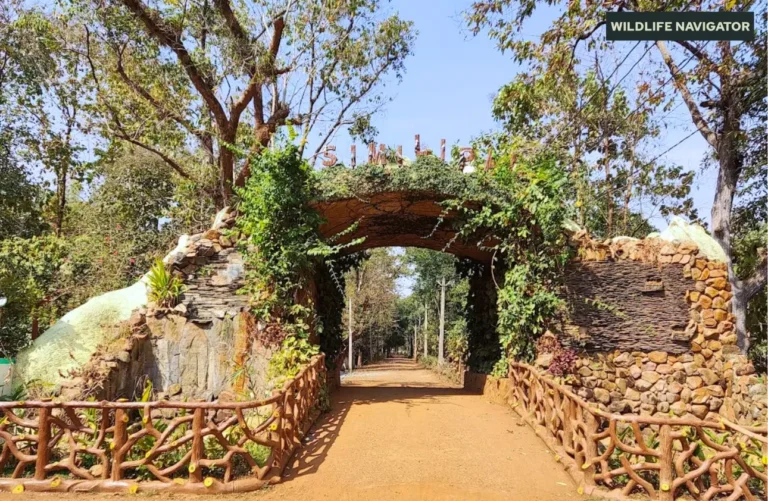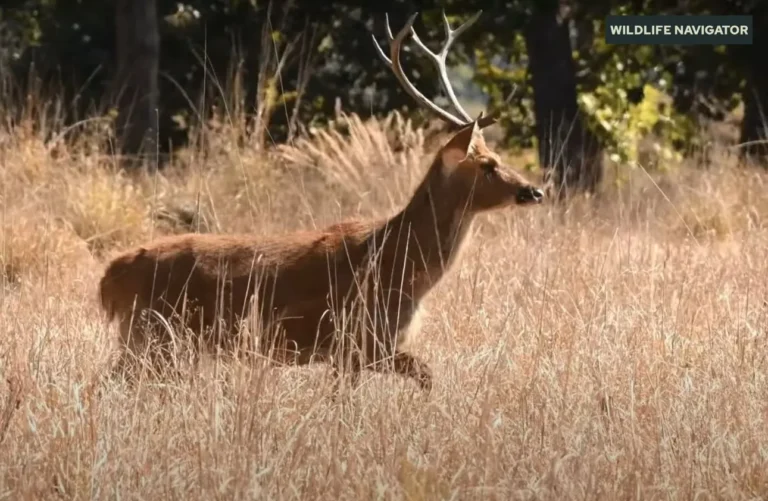Sahyadri Tiger Reserve – Kathi, A Wild Gem of Maharashtra

Sahyadri Tiger Reserve is one of India’s vital wildlife conservation areas in the lush green Western Ghats of Maharashtra. This reserve is part of the larger Sahyadri mountain range, which is renowned for its rich biodiversity and status as a UNESCO World Heritage Site. The reserve not only serves as a safe haven for the majestic Bengal tiger but also preserves an array of endemic flora and fauna unique to this region.
Covering sprawling forest landscapes across the districts of Satara and Raigad, Sahyadri Tiger Reserve acts as a critical corridor connecting several other protected areas in the Western Ghats. Its dense forests, river valleys, and rugged terrain make it an ideal habitat for wildlife while offering breathtaking natural beauty for visitors.
For wildlife enthusiasts and eco-tourists, the reserve presents a perfect blend of adventure and conservation awareness. From spotting tigers, leopards, and gaurs to trekking amidst scenic landscapes, every visit promises a unique experience. The reserve’s ecological significance lies not only in tiger conservation but also in maintaining the balance of the Western Ghats ecosystem, which supports countless species and contributes to regional climate regulation.
History & Establishment
The Sahyadri Tiger Reserve was officially notified in 2007, making it one of Maharashtra’s important tiger conservation areas under the Project Tiger initiative. Its creation was driven by the urgent need to protect the dwindling tiger population and preserve the rich biodiversity of the Western Ghats.
Before its designation as a tiger reserve, the area consisted of fragmented forest lands managed under different forest divisions, including Chandoli National Park (the southern part) and Koyna Wildlife Sanctuary (the northern part). By combining these regions under a single protected status, the government aimed to create a contiguous habitat that would allow tigers and other large mammals to roam freely without the threat of habitat fragmentation.
Key milestones in its history include:
- 2007: Notification as Sahyadri Tiger Reserve under Project Tiger.
- Integration of Koyna Wildlife Sanctuary: Strengthened the reserve’s ecological network.
- Ongoing Conservation Programs: Involvement of the Maharashtra Forest Department and NTCA in anti-poaching, monitoring, and habitat restoration efforts.
The reserve’s establishment also emphasises the importance of community participation. Local villages surrounding the reserve are involved in eco-tourism and forest protection initiatives, creating a balance between conservation goals and livelihood opportunities. Today, Sahyadri Tiger Reserve is celebrated not just for tiger protection but also as a model for landscape-level conservation in the Western Ghats.
Geography & Landscape
Sahyadri Tiger Reserve is situated in the heart of the Western Ghats, spanning the districts of Satara and Raigad in Maharashtra. This region is characterised by its rugged terrain, undulating hills, deep valleys, and dense forests, creating a diverse and vibrant ecosystem that supports a wide range of wildlife.
The reserve covers an area of approximately 1,166 square kilometres, including the Koyna Wildlife Sanctuary and surrounding reserved forest patches. It is strategically positioned as part of the Western Ghats biodiversity hotspot, which is globally recognised for its endemic plant and animal species. The area’s elevation ranges from 600 to 1,200 meters, offering a mix of lowland and highland habitats.
Key features of the landscape include:
- Forest Types: Evergreen, semi-evergreen, and moist deciduous forests dominate the reserve.
- Rivers & Water Bodies: The Koyna River and its tributaries provide essential water sources for wildlife and support rich riparian vegetation.
- Hill Ranges & Valleys: Rugged hills and valleys form natural corridors for tiger movement and other large mammals.
- Climate: The region experiences heavy monsoon rainfall (June to September) and mild winters, creating lush greenery and dense undergrowth throughout most of the year.
The reserve’s varied topography not only provides diverse habitats for tigers, leopards, and herbivores but also offers breathtaking landscapes for eco-tourists and trekkers. Its combination of hills, rivers, and dense forests makes it one of Maharashtra’s most scenic and ecologically significant tiger reserves.
Flora & Fauna
Sahyadri Tiger Reserve is a treasure trove of biodiversity, boasting a wide variety of plant and animal life that makes it a key conservation area in the Western Ghats. Its rich forests and river valleys create habitats for numerous endemic, rare, and endangered species.
Flora
- The reserve is dominated by evergreen, semi-evergreen, and moist deciduous forests.
- Dense tree cover includes species such as teak, bamboo, Indian laurel, and jamun.
- Medicinal plants like Asparagus racemosus and Aegle marmelos grow abundantly.
- Unique Western Ghats endemics, including rare orchids and shrubs, flourish in the reserve’s humid microclimates.
Fauna
- Bengal Tigers: The flagship species and the main reason for the reserve’s protection.
- Other Mammals: Leopards, sloth bears, gaurs, barking deer, wild dogs (dholes), and macaques.
- Birds: Over 250 species, including Malabar Grey Hornbill, Indian Grey Hornbill, and Great Hornbill, Malabar trogons, and the endemic Indian pitta.
- Reptiles & Amphibians: King cobras, pythons, monitor lizards, and endemic frog species thrive in the forests and streams.
- Insects & Butterflies: Numerous butterfly species, including endemic swallowtails, highlight the ecological richness.
The reserve’s diverse habitats, ranging from dense forest interiors to riverine corridors and hilltops, ensure that each species has a niche. The combination of unique flora and abundant fauna not only supports the tiger population but also makes Sahyadri a hotspot for wildlife researchers, photographers, and eco-tourists.
Tiger Conservation Efforts
Sahyadri Tiger Reserve plays a crucial role in the survival and growth of India’s tiger population. As part of Project Tiger, the reserve has implemented multiple strategies to ensure that these apex predators and their habitats are protected.
Key Conservation Measures:
- Monitoring & Tracking: Tigers and other large mammals are regularly monitored using camera traps, GPS collars, and field surveys to assess population health and movement.
- Anti-Poaching Measures: The Maharashtra Forest Department has established patrol teams and checkposts to prevent poaching and illegal logging. Villagers are often involved in reporting suspicious activities.
- Habitat Management: Efforts include forest restoration, waterhole maintenance, and controlled burning to maintain healthy ecosystems for prey species.
- Community Involvement: Local communities are encouraged to participate in conservation through eco-tourism, awareness programs, and employment as forest guides or wardens.
- Research & Education: Collaborations with universities and NGOs help in studying tiger behaviour, prey populations, and ecosystem health. Educational programs raise awareness among locals and visitors.
Success Stories:
- Over the past decade, the tiger population in Sahyadri has shown steady growth, indicating the effectiveness of conservation strategies.
- Prey species like gaurs, deer, and wild boars have also rebounded, supporting a balanced ecosystem.
Through these combined efforts, Sahyadri Tiger Reserve has emerged as a model for landscape-level tiger conservation, demonstrating how habitat protection, community engagement, and scientific research can work together to secure a future for India’s tigers.
Eco-Tourism & Visitor Information
Sahyadri Tiger Reserve is not only a haven for wildlife but also a destination for eco-tourists seeking adventure, nature, and wildlife experiences. Responsible tourism helps generate revenue for conservation while creating awareness about the importance of protecting this biodiversity hotspot.
Best Time to Visit:
- October to March: Ideal for wildlife spotting, trekking, and enjoying the scenic landscapes.
- Monsoon Season (June to September): The reserve is lush and green but trekking can be challenging due to heavy rainfall.
Safari Options & Activities:
- Jeep Safaris: Organised by the forest department to explore tiger habitats and spot wildlife.
- Guided Nature Walks: Short treks led by trained guides to learn about flora, fauna, and ecosystem dynamics.
- Bird Watching: The reserve is home to endemic and migratory birds, making it perfect for bird enthusiasts.
- Photography Tours: Special trips for wildlife photographers to capture tigers, leopards, and other species in their natural habitat.
Accommodation Options:
- Forest Rest Houses & Lodges: Managed by the Maharashtra Forest Department within or near the reserve.
- Hotels & Homestays: Available in nearby towns such as Satara and Mahabaleshwar, offering a blend of comfort and proximity to the reserve.
- Eco-Camps: For adventure lovers, campsites provide a rustic experience surrounded by nature.
Visitor Guidelines:
- Entry requires permits issued by the forest department.
- Tourists must follow eco-friendly practices, including avoiding littering, maintaining silence, and respecting wildlife.
- Photography is encouraged, but feeding or disturbing animals is strictly prohibited.
By offering these experiences, Sahyadri Tiger Reserve allows visitors to connect with nature responsibly, while supporting the long-term conservation of tigers and other wildlife.
Nearby Attractions & Connectivity
Sahyadri Tiger Reserve is surrounded by several notable attractions and well-connected towns, making it accessible for eco-tourists and wildlife enthusiasts looking to explore the Western Ghats.
Nearby Attractions:
- Koyna Wildlife Sanctuary: Adjacent to the reserve, it offers additional trekking trails and wildlife spotting opportunities.
- Pawna Lake: A scenic spot ideal for camping, birdwatching, and photography.
- Mahabaleshwar: A hill station known for strawberry farms, viewpoints, and pleasant weather, just a few hours’ drive from the reserve.
- Tapola (Mini Kashmir of Maharashtra): Popular for boating and nature walks along the Shivsagar Lake.
- Chiplun and Raigad Fort: Offer historical insights and panoramic views of the Western Ghats.
Connectivity:
- By Road: Well-connected to cities like Pune (approx. 150 km) and Mumbai (approx. 250 km) via National and State Highways. Local taxis and buses can take visitors close to forest entry points.
- By Rail: The nearest railway stations are Satara, Chiplun, and Panvel, which connect to major cities across Maharashtra and India.
- By Air: The nearest airports are Pune International Airport and Mumbai International Airport; from there, travellers can hire taxis or use public transport to reach the reserve.
Suggested Itinerary:
- Day 1: Arrival and local sightseeing (Pawna Lake or Mahabaleshwar).
- Day 2: Safari in Sahyadri Tiger Reserve.
- Day 3: Trekking or birdwatching in adjacent forests like Koyna Wildlife Sanctuary.
With its combination of wildlife, hills, lakes, and historical sites, Sahyadri Tiger Reserve and its surroundings offer a complete eco-tourism experience, easily accessible from major cities in Maharashtra.
Challenges & Future Plans
While Sahyadri Tiger Reserve has made significant progress in tiger conservation, it faces several ongoing challenges that require constant attention and proactive management.
Major Challenges:
- Human-Wildlife Conflict: Encroachment of villages and agriculture near the reserve leads to occasional conflict with tigers, leopards, and herbivores.
- Habitat Fragmentation: Development projects, roads, and dams can disrupt wildlife corridors and restrict tiger movement.
- Poaching & Illegal Activities: Despite strict measures, illegal hunting of prey species and tree logging remain concerns.
- Tourism Pressure: Unregulated tourism can disturb wildlife and degrade habitats if eco-friendly practices are not strictly enforced.
Future Plans & Initiatives:
- Habitat Restoration: Expansion of forested areas and creation of new waterholes to support prey populations and tiger movement.
- Community Engagement: Increasing involvement of local communities in eco-tourism, awareness campaigns, and forest protection programs.
- Scientific Research: Enhanced use of technology like drones, camera traps, and GPS tracking to monitor wildlife and reduce poaching.
- Sustainable Tourism: Development of guided safari routes, eco-camps, and visitor education programs to ensure tourism does not impact the ecosystem.
- Collaboration with NGOs: Partnering with wildlife organisations for conservation training, anti-poaching drives, and biodiversity studies.
By addressing these challenges and implementing future-oriented strategies, Sahyadri Tiger Reserve aims to maintain a balanced ecosystem, ensure long-term survival of tigers, and protect the unique biodiversity of the Western Ghats. Its proactive approach sets a benchmark for tiger reserves across India.
Conclusion
Sahyadri Tiger Reserve stands as a shining example of India’s commitment to tiger conservation and the protection of its unique Western Ghats biodiversity. From its dense forests and rolling hills to the rivers and valleys that sustain life, the reserve provides a safe haven for tigers, leopards, gaurs, and countless other species. Its success reflects the combined efforts of the Maharashtra Forest Department, local communities, and conservation organisations, ensuring that wildlife thrives alongside responsible eco-tourism.
For travellers and wildlife enthusiasts, Sahyadri offers more than just the chance to glimpse a tiger—it presents an opportunity to connect with nature, explore scenic landscapes, and understand the importance of preserving fragile ecosystems. Every visit contributes to awareness and support for conservation initiatives, helping protect this remarkable habitat for future generations.
FAQs (Frequently Asked Questions)
1. How far is Sahyadri Tiger Reserve from major cities like Mumbai or Pune?
- The reserve is approximately 250 km from Mumbai and 150 km from Pune, making it accessible for a 1–2 day wildlife trip by road.
2. Can tourists spot tigers easily in Sahyadri Tiger Reserve?
- Tiger sightings are rare and depend on luck, as tigers are elusive and roam large territories. However, the reserve’s healthy tiger population increases the chances during early morning or late afternoon safaris.
3. What are the best accommodations near the reserve?
- Options include forest lodges managed by the Maharashtra Forest Department, eco-camps, and hotels or homestays in Satara, Mahabaleshwar, or nearby towns. Booking in advance is recommended during peak seasons.
4. Are guided safaris and treks available?
- Yes, the forest department organises jeep safaris, nature walks, and guided treks. Hiring trained guides is mandatory for entry into core areas.
5. What is the best time to visit Sahyadri Tiger Reserve?
- October to March is ideal for wildlife spotting, trekking, and enjoying pleasant weather. The monsoon months (June–September) bring lush greenery but can make trails slippery and access difficult.
6. Are there any restrictions for visitors?
- Tourists must obtain entry permits and follow strict rules: no littering, no feeding animals, maintaining silence, and avoiding off-trail exploration to minimise disturbance to wildlife.





